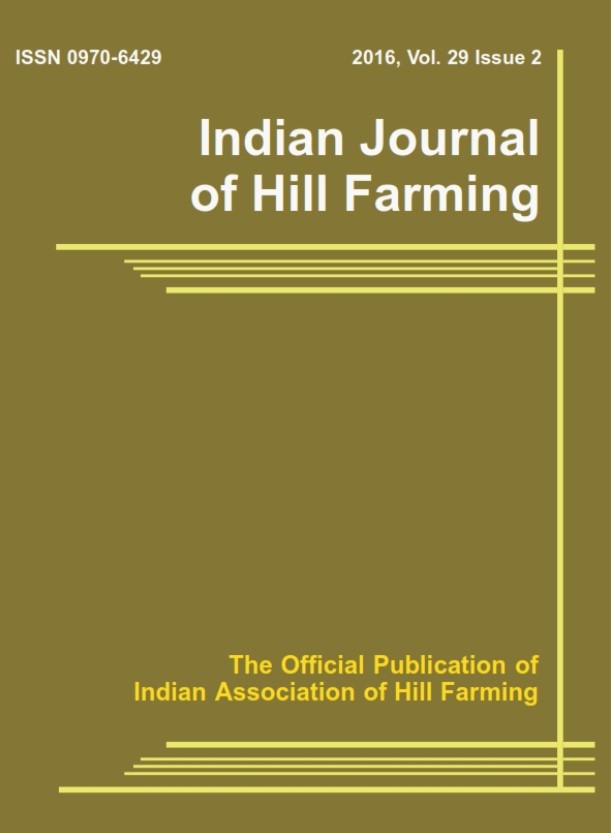Diversity of insects in tomato (Lycopersicon esculentum Mill.) eco-system in mid-hills of Meghalaya
DOI:
https://doi.org/10.56678/Keywords:
Species richness, dominance, pollinators, correlationAbstract
A study on “Diversity of insects in tomato (Lycopersicon esculentum Mill.) ecosystem in mid-hills of Meghalaya” was conducted in the experimental fields of College of Post Graduate Studies in Agricultural Sciences, Umiam, Meghalaya for two cropping seasons viz. winter (October, 2022- January, 2023) and Spring-summer (February, 2023 – May, 2023).A total of 29 insect species were recorded which belonged to 7 orders and 22 families, the most abundant order being Coleoptera with 9 species followed by Hemiptera (6), Diptera(5), Lepidoptera (3), Hymenoptera (3), Odonata (2) and Orthoptera (1). A total of 19615 nos. of insect pests, 411 nos. of natural enemies and 56 specimens of pollinators were recorded during October, 2022- May, 2023. During winter and spring-summer cropping seasons, Simpson’s indices were 0.283 and 0.271, respectively, while Shannon indices were 1.398 and 1.447, respectively. 15 insect species were identified to be insect pests of tomato, while 10 species were natural enemies of pests of tomato and 4 species were pollinators. Aphis gossypii was the most abundant insect pest with a relative abundance of 42.51 %, followed by Tuta absoluta (25.48 %) and Helicoverpa armigera (20.74 %). Nesidiocoris tenuis (31.75 %) and Allograpta obliqua(42.86 %) were the dominating natural enemy and pollinator of tomato, respectively. The incidence of the major insect pests had a significant positive correlation with maximum temperature and a negative correlation with relative humidity.Downloads
Published
2023-03-31
Issue
Section
Articles
License
Copyright (c) 2023 Gracy Mankhanniang, N.S. Azad Thakur, T. Rajesh, Mahesh Pathak, Kennedy Ningthoujam, Veronica Kadam (Author)

This work is licensed under a Creative Commons Attribution-NonCommercial-NoDerivatives 4.0 International License.
How to Cite
Diversity of insects in tomato (Lycopersicon esculentum Mill.) eco-system in mid-hills of
Meghalaya. (2023). Indian Journal of Hill Farming, 36(02), 40-46. https://doi.org/10.56678/




